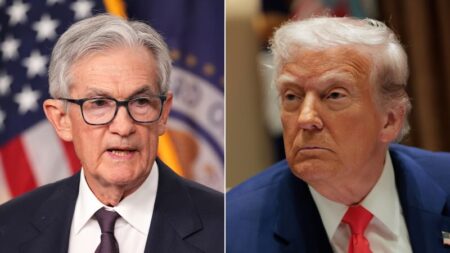In recent developments, former President Donald Trump has reignited trade tensions with Japan, primarily centered on the issue of rice exports. Trump has threatened to impose higher tariffs on Japanese goods, alleging that Japan is not purchasing enough American-grown rice, despite the evidence contradicting his claims. This precarious situation highlights the complexities of international trade negotiations and the challenges faced by countries trying to establish beneficial economic relations.
In a post made on Truth Social, Trump stated, “They won’t take our RICE, and yet they have a massive rice shortage. In other words, we’ll just be sending them a letter, and we love having them as a Trading Partner for many years to come.” Such statements, however, do not align with factual trade data. According to statistics from the U.S. Census Bureau, Japan actually imported $298 million worth of rice from the United States last year alone. In fact, from January to April of the current year, that figure rose to approximately $114 million. Hence, Trump’s assertion that Japan is unwilling to buy American rice is misleading.
Adding to the complexity of the trade narrative, Japanese officials engaged in ongoing negotiations have not confirmed any intent to cease rice purchases from the U.S. During a press briefing, Chief Cabinet Secretary Yoshimasa Hayashi indicated that discussions were still active and that the Japanese government had noted Trump’s remarks. However, he did not provide any specific comments related to the alleged rice trade issues, emphasizing instead Japan’s commitment to maintaining sincere and productive discussions to reach a mutually beneficial agreement.
Compounding matters is a report from the Office of the United States Trade Representative published under the Biden administration, which highlighted Japan’s intricate and highly regulated importation system for rice, thus limiting access for U.S. exporters. It appears that this long-standing issue of trade barriers is what Trump is referencing in his inflammatory statements about Japanese rice imports. A source close to Trump mentioned to CNN that these complexities are essential to understanding his perspective, framing Japan’s importation practices as restrictive.
In light of the ongoing negotiations and Trump’s recent declarations regarding international tariffs, he has indicated plans to communicate new tariff rates to several foreign nations. Specifically, in a Fox News interview, Trump singled out Japan as a recipient of such notifications, stating, “Dear Mr. Japan, here’s the story: You’re going to pay a 25% tariff on your cars.” This statement underscores a potentially significant shift in U.S.-Japan trade relations, particularly in the automotive sector.
As the July 9 deadline approaches, marking the end of Trump’s previous 90-day pause on “reciprocal” tariffs, uncertainty looms over the future of tariff rates affecting numerous countries. Prior to the implementation of the pause, goods from Japan faced a minimum tariff of 24%; after it was enacted, those goods reverted to a universal 10% rate, showcasing the volatility and unpredictability of trade policies under Trump’s administration.
Through these developments, White House National Economic Council Director Kevin Hassett commented that discussions with Japan are ongoing, urging that “nothing is over.” Hassett highlighted that negotiations could persist even up to the final hour, suggesting a framework may emerge, but further details will need to be finalized before any agreement is reached.
This evolving situation is undoubtedly shaping U.S.-Japan relations, with an emphasis on agriculture and auto industries. As both countries navigate trade negotiations, the outcomes will likely have far-reaching implications for international trade practices, economic stability, and diplomatic relations moving forward. The stakes remain high as both parties seek to balance their respective economic interests in a complicated global landscape. Moving forward, it will be crucial to monitor these discussions, as the dynamics of trade relationships continue to shift in response to evolving policies and market conditions.











